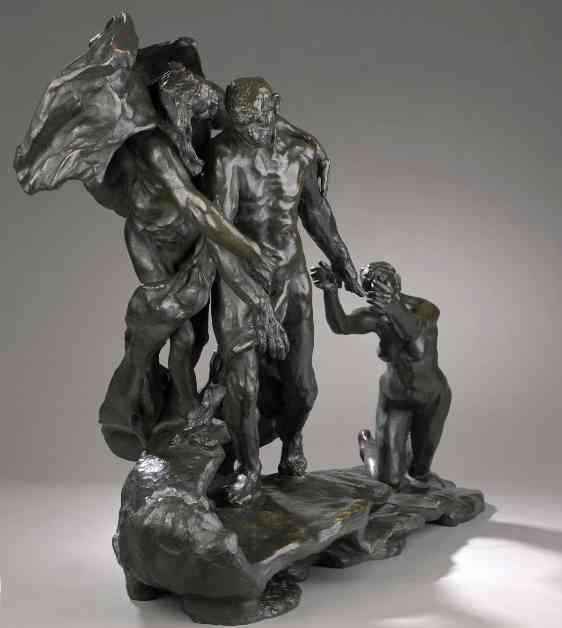A long-lost bronze sculpture by the renowned artist Camille Claudel recently made headlines after being discovered in an abandoned apartment in Paris. The sculpture, titled La Jeunesse et L’Age Mûr, or L’Age Mûr (The Age of Maturity), was sold at an auction in France for an impressive €3.7 million ($3.8 million), far exceeding its initial estimated value.
The expressive group of bronze sculptures features a man and two women, with one woman appearing aged and leading the man forward, while the other is young and kneeling, seemingly pleading for his return. This poignant scene has been interpreted as an allegory for life’s inevitable losses and as a reflection of Claudel’s personal turmoil during the dissolution of her relationship with Auguste Rodin, her teacher, and lover. Following their breakup, Claudel experienced a mental breakdown and was institutionalized for psychiatric care, adding layers of emotional depth to her artwork.
The discovery of this lost masterpiece was a serendipitous moment, as the bronze was found by Matthieu Semont, an auctioneer from Philocale, while cataloging the apartment’s contents for its inheritor. The circumstances surrounding how the sculpture ended up in the apartment and was forgotten for over a century remain shrouded in mystery, adding an air of intrigue to its journey back into the spotlight.
Despite Claudel’s significant artistic contributions, her work remained relatively unknown until the release of a biopic in 1988, which helped revive interest in her pieces. Today, individual works by Claudel typically fetch around $1 million, reflecting a growing appreciation for her talent and unique artistic vision.
Currently, only three other bronze versions of L’Age Mûr are known to exist, with one housed at the Musée Camille Claudel in Nogent-sur-Seine and two others at the Musée d’Orsay and the Musée Rodin, respectively. The recent sale of the bronze sculpture at Philocale, an auction house in Orleans, marks it as the second most expensive piece by Claudel ever sold, following closely behind a single-casting version of La Valse (The Waltz), which sold for a staggering £5.1 million in London in 2013.
In a statement following the auction, Semont revealed that the buyer, who secured the piece via telephone, chose to remain anonymous for the time being. The anticipation surrounding the unveiling of the new owner adds an element of mystery and suspense to the story, leaving art enthusiasts and collectors alike eager to learn more about the individual who now possesses this rare and captivating work of art.












